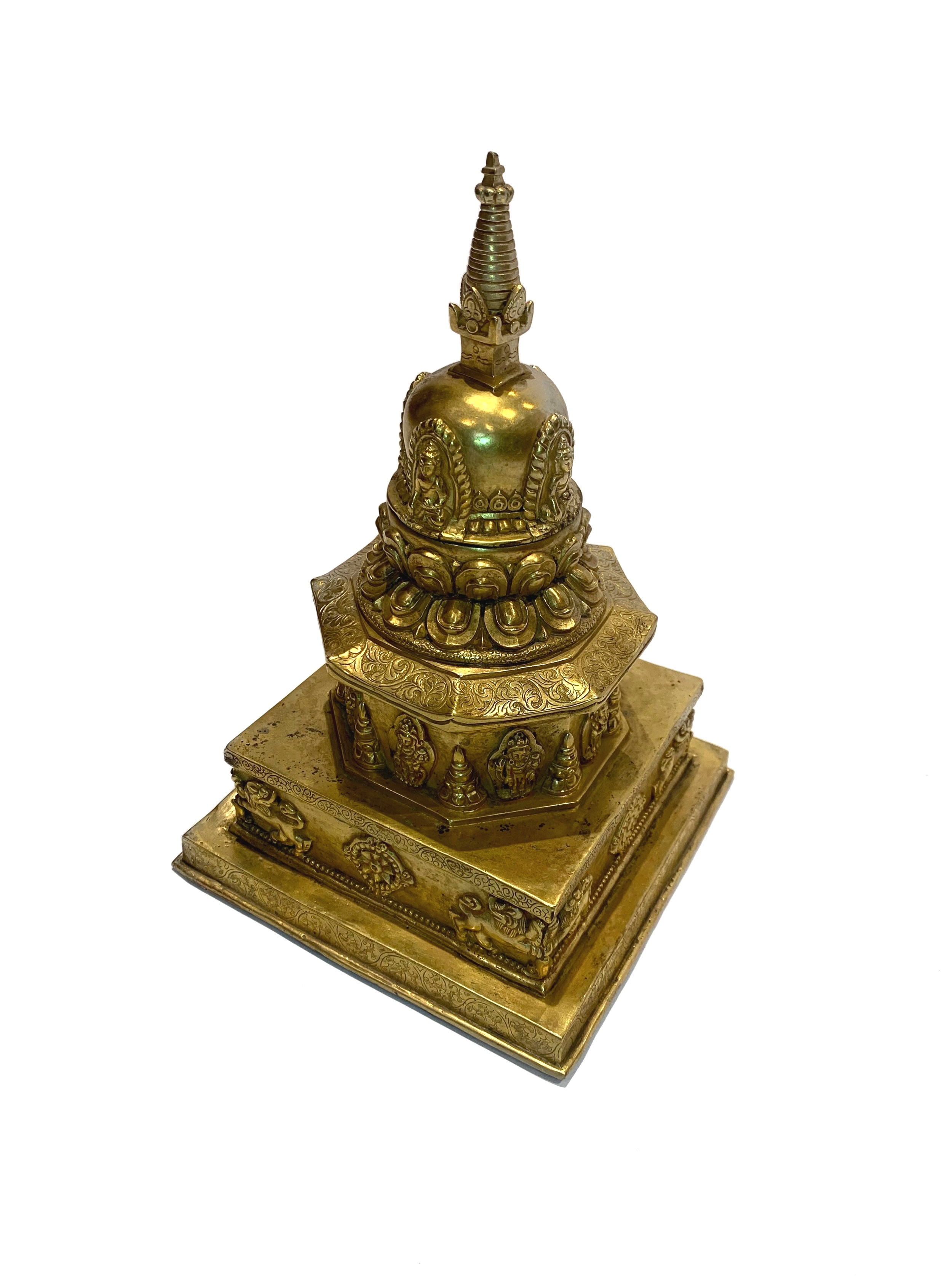
Vajra Yogini
The Vajrayogini is a female deity who has attained complete Buddhahood. She is generally presented in a wrathful state—clasping a skull and a dagger, surrounded by flames representing cremation grounds. Vajrayogini emulates that the ordinary world has become dead in contrast to the inner life and its pristine vision of reality, free from distorting illusions. The deity is thus an integral component of the cognitive element of attaining Buddhahood. Vajra-yogini’s mantra is “Oṃ Vajrayoginī Hūṃ Phaṭ Svāhā.”

Thousand Arm Avalokiteshvara
Avalokiteśvara, also known as Chenrezig in Tibetan, is the Buddha of Compassion. He comes in many different forms—from having two, four, or even up to a thousand arms. The thousand arms represent his wish to protect all sentient beings in a thousand different ways. The mantra associated with Chenrezig is “Om mani padme hum.” Reciting this mantra invoked his intervention and guidance. Practicing compassion improves brain functions and gives us inner strength, inciting happiness.

Ganesh
Ganesh is the Hindu Lord of Good Fortune. Worshipping Ganesh can allow one to collect prosperity, fortune, and success. Lord Ganesh is often the first deity placed in a new home; and in accordance with the legend, Ganesh is often placed facing doorways to keep out the unworthy. Ganesh is presented with a mouse nearby, signifying detachment from obstacles of any size and the ability of Ganesh to control all creatures and situations.

Buddha
Buddha Shakyamuni founded Buddhism in the 6th century. He was born as Siddhartha Gautama to a royal family. Sheltered from a young age by his father, it wasn’t until he was 29 years old when he learned of the sufferings of life. This exposure led him to leave the life of a prince to experience suffering and discover a means to overcome it. This statue presents the Buddha in the Dharmachakra mudra. This gesture represents the Buddha turning the wheel of dharma. Buddha Shakyamuni’s mantra is “Om Muni Muni Maha Muniye Soha.”

Stupa
A stupa is a Buddhist monument that contains auspicious relics. It is often used as a site to practice meditation and recite prayers. The structure of the stupa represents the stance of the Buddha when he reached enlightenment. The quadrilateral base signifies Buddha’s crossed legs. The middle, hemispherical section represents Buddha’s body. The tip of the stupa depicts Buddha’s head.

Lakshmi, the Goddess of Abundance
A deity in Hinduism, Lakshmi is the Goddess of Abundance, delivering luck, wealth, and prosperity to those who worship her. Here, she is depicted with four arms. Each arm represents the four ends to human life—righteousness, desires, wealth, and liberation from the cycle of birth and death. Lakshmi is shown standing on a lotus flower. This represents beauty, purity, and fertility.

Green Tara
Green Tara is known as the Goddess of Universal Compassion and the Mother of Liberation. She represents the virtuous and enlightened activity as well as success in work and achievements. She is shown in a posture of ease and readiness for action with one leg folded in the contemplative position and another leg outstretched, ready to spring into action. Green Tara’s hands are positioned in the refuge-granting mudra gesture and the boon-granting giving gesture. In her hands she is also known to hold closed blue lotuses which symbolize purity and power. The main Tara mantra or prayer is “oṃ tāre tuttāre ture svāhā.”

Chenrezig with Five Buddha Family
Avalokiteśvara, also known as Chenrezig in Tibetan, is the Buddha of Compassion. He comes in many different forms. Here, he is depicted with the Five Buddha Families, each signifying a different facet of enlightenment. The Buddha family embodies consciousness, the Vajra family represents form, the Ratna family displays feelings, the Padma family delineates perceptions, and the Karma family correlates to intention. Understanding and implementing these five energies when meditating can play an integral role in allowing one to manifest wisdom and peace. The mantra associated with Chenrezig is “Om mani padme hum.” Reciting this mantra invoked his intervention and guidance. Practicing compassion improves brain functions and gives us inner strength, inciting happiness.

Ganesh
Ganesh is the Hindu Lord of Good Fortune. Worshipping Ganesh can allow one to collect prosperity, fortune, and success. Lord Ganesh is often the first deity placed in a new home; and in accordance with the legend, Ganesh is often placed facing doorways to keep out the unworthy. Ganesh is presented with a mouse nearby, signifying detachment from obstacles of any size and the ability of Ganesh to control all creatures and situations.